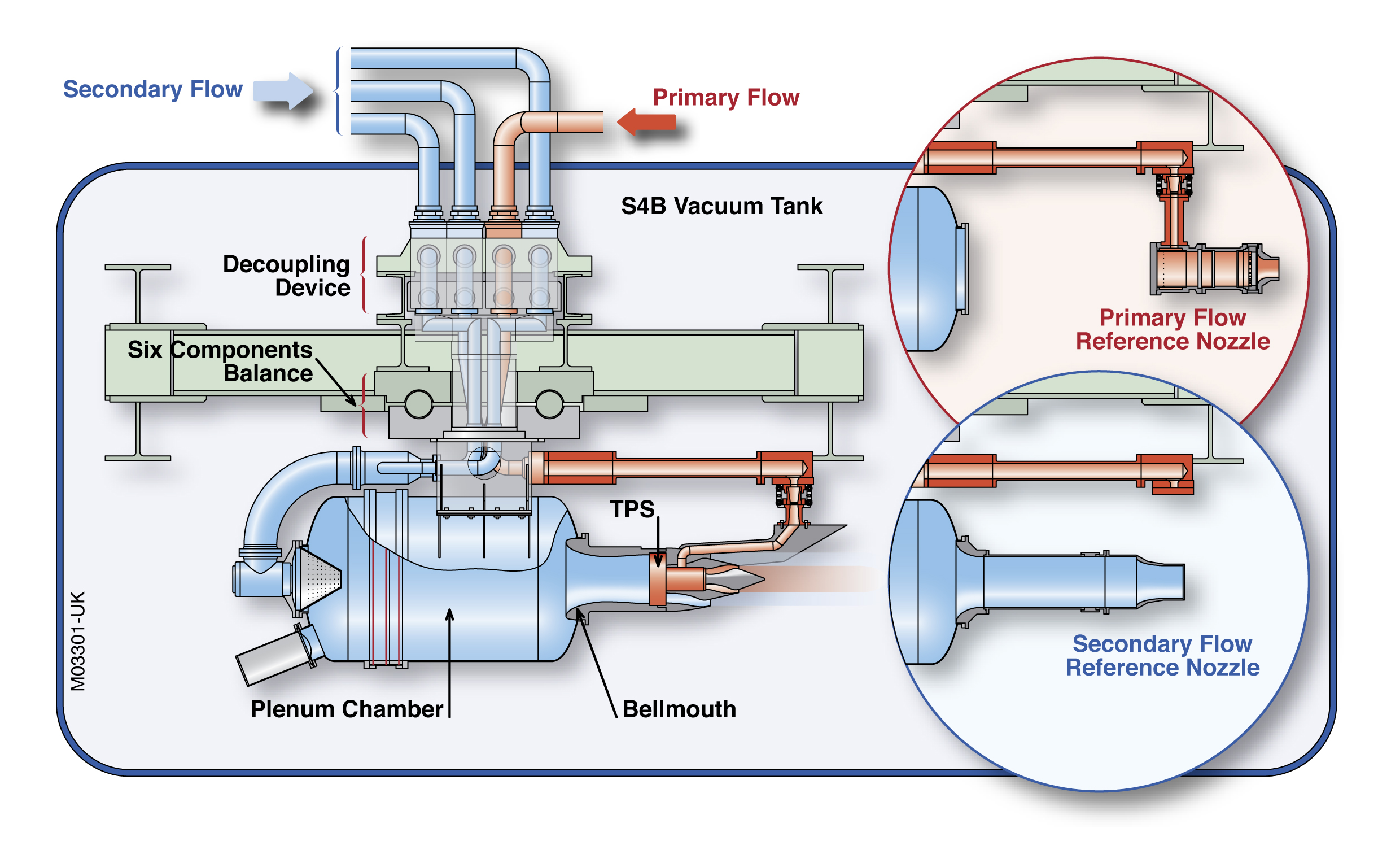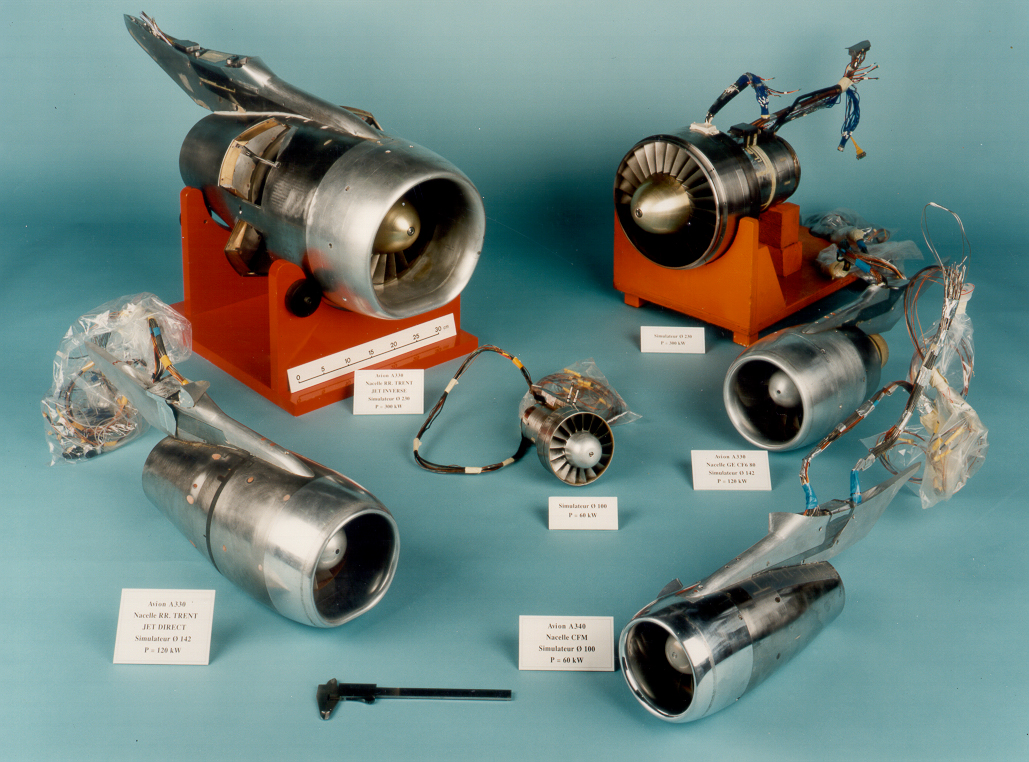Model Engine Calibration Rig
TYPICAL TEST
- Nozzle thrust tests with altitude simulation.
- Direct or reverse jet model engine calibration, with simulation of the wind tunnel test conditions.
- Through Flow Nacelles calibrations.
- Thrust reversers calibrations and jet angularities.
S4B vacuum tank
- Cylindrical sealed vessel, diameter 2.5 m, length 15 m.
- Fed by compressed air:
- two pressure levels, 9 bar and 64 bar;
- dry and clean air (12 µm mesh filtering, less than 5 mg of water per kg of dry air) with temperature controlled;
- air storage: 9,500 m3 at 9 bar and 109 m3 at 270 bar.
- Vacuum connection:
- internal absolute pressure level from 15 mbar to atmosphere;
- connection pipes (diameter up to 1,200 mm) toward vacuum tanks with adaptable volume between 1,000 and 8,000 m3;
- possible vacuum setting by ejector effect (Bertin ejector or using the tested nozzle itself).
TEST TECHNIQUES
- Mass flow control and temperature control of the two jets.
- Separate control of the pressure upstream of the fan, of the model engine RPM and of the nozzle exit pressure.
- Test rigs checking using reference nozzles.
- Jet thrust vector measurement (module and angularity).
MEASUREMENT
- Steady measurements = 64 analog channels, 16 bits A/D converter, digital lowpass filtering with a bandwidth from 0.01 to 10 Hz. Steady accuracy ±1 mV, resolution 0.3mV.
- On demand, unsteady measurements = 64 analog channels at 100 kHz per channel. 12 bits A/D converter, digital lowpass filtering with a bandwidth from 0 to 20 kHz (if necessary the number of channels can be increased).
- Steady pressures = 992 channels (by DTC PSI®, system 8400).
Measurement techniques
- Temperature measurement by thermocouples and PT100 probes
- Load measurement by ONERA six components balances (decoupling device for air flow crossing through).
- Sonic throat mass flow meters for the primary and fan jets.
Accuracy:
- The uncertainties in the 4" test rig with the Ø 100 mm reference nozzle are (from test campaigns between 1987 and 2009),
- Flow coefficient: ± 0,1 % in 86 % of the test cases,
- Thrust coefficient: ± 0,15 % in 81 % of the test cases.





